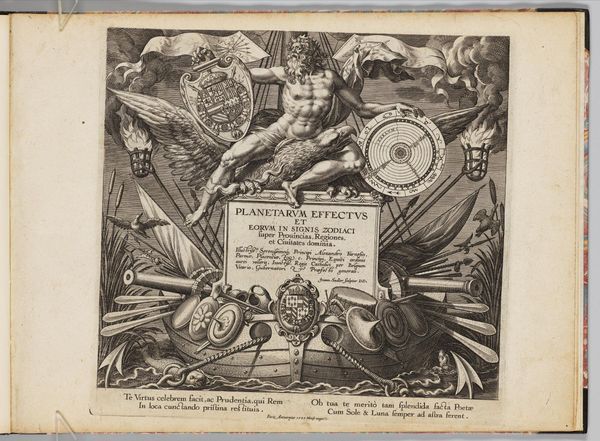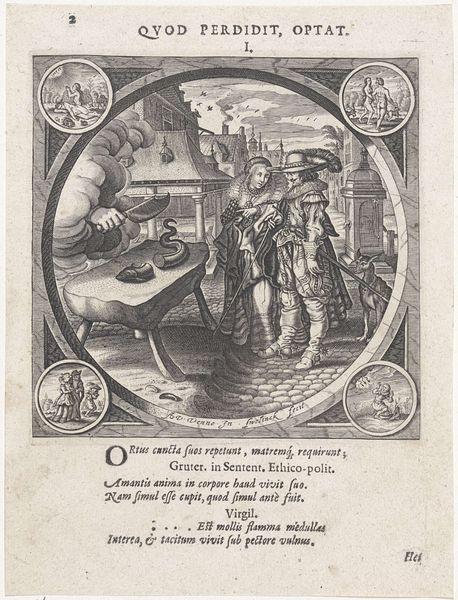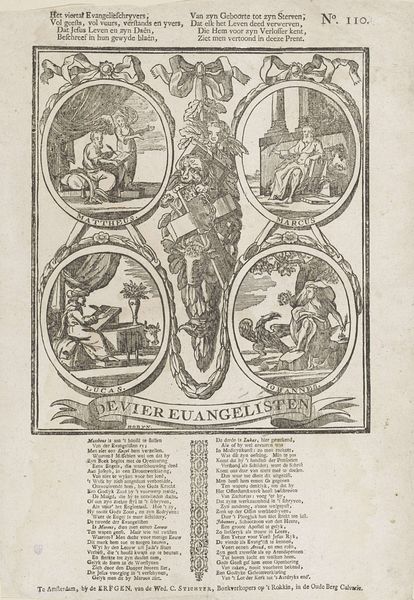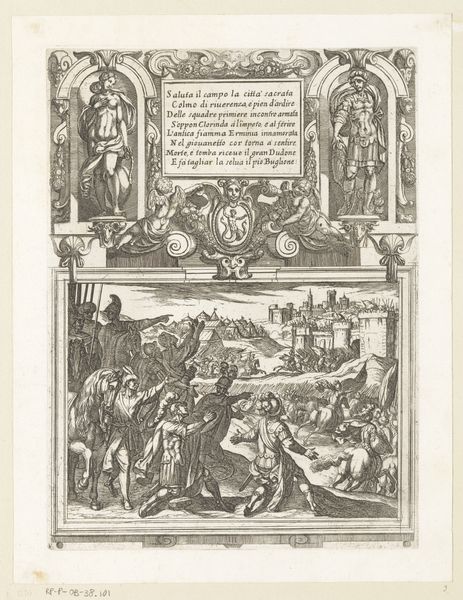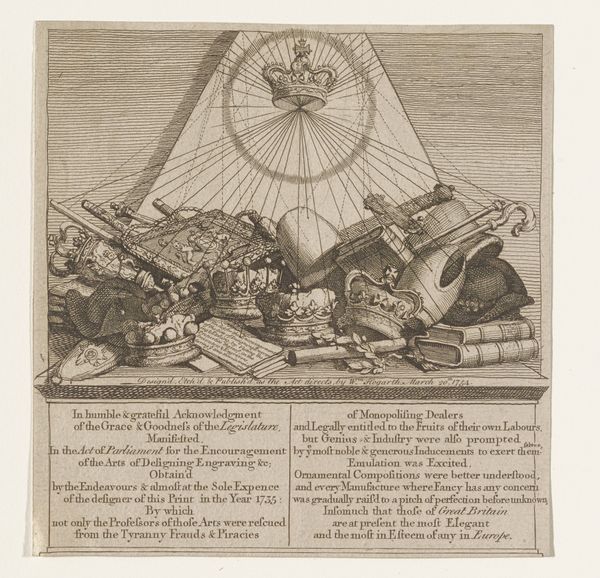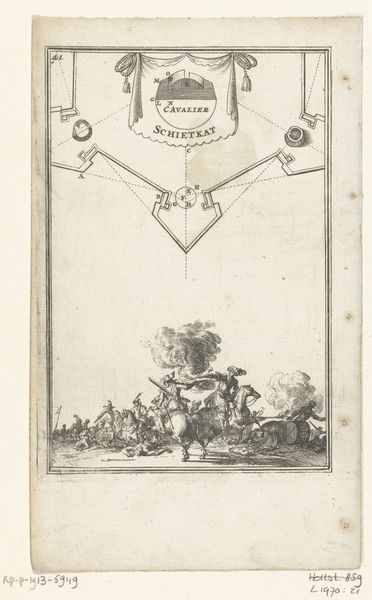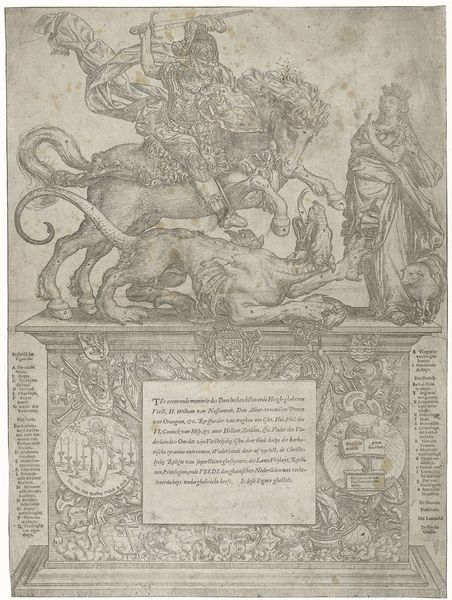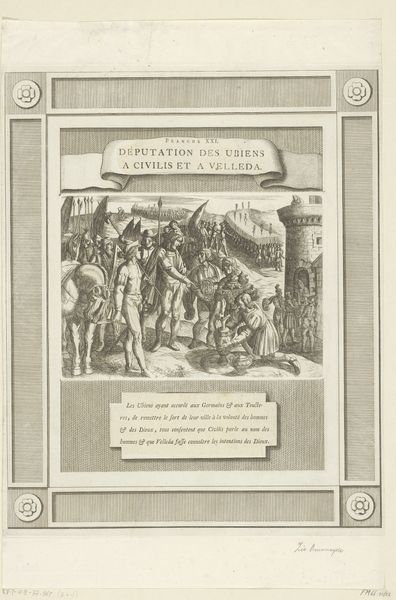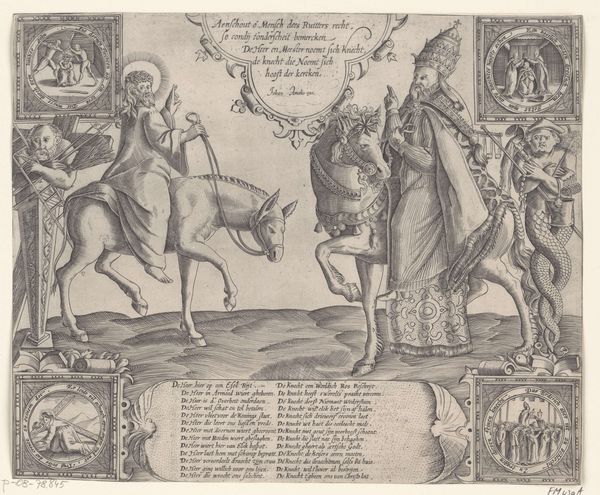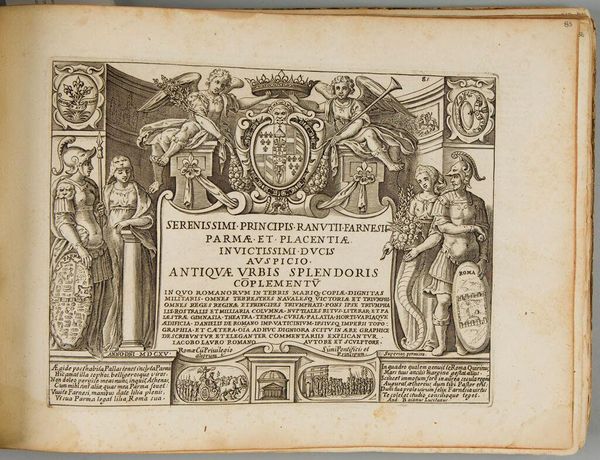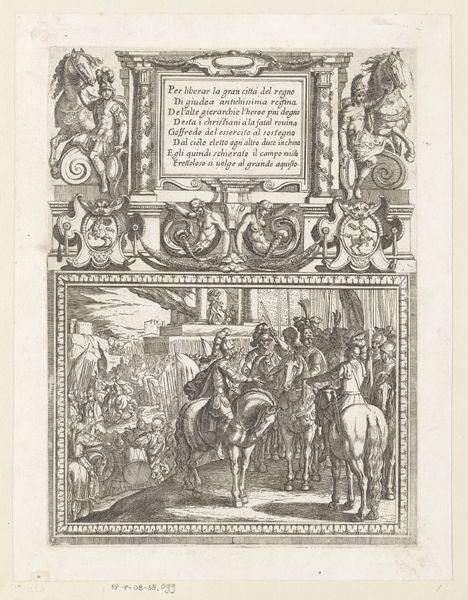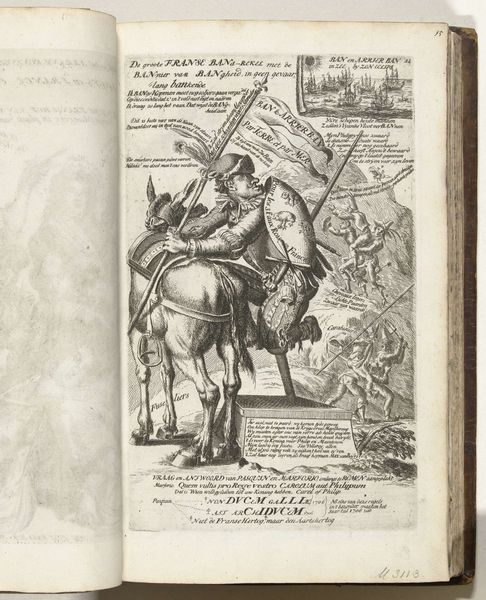
print, engraving
#
baroque
# print
#
figuration
#
line
#
history-painting
#
engraving
Dimensions: height 294 mm, width 207 mm, height 430 mm, width 320 mm
Copyright: Rijks Museum: Open Domain
Curator: Looking at "Banier van de Turken," an engraving made in 1684 by Sebastiano Bianchi, what immediately strikes you? Editor: The stark contrast. The upper banner area, carefully detailed with those symbolic forms, sits so strangely above that tumultuous, almost violently rendered scene of conflict below. It’s… discordant. Curator: Interesting observation! What’s particularly compelling to me is the way the printmaking process itself becomes part of the narrative. The intricate lines, a product of labor-intensive engraving, present the banner almost as an artifact, detached from the chaos of the battle. Editor: Yes, there’s that disconnect again. The means of production really underscore a distanced, mediated understanding of conflict. The almost ornamental rendering of the Turkish banner feels more like a trophy, or a generalized emblem than anything connected to human experience. Curator: Exactly. Consider also the act of consumption: who was buying this print? And how did they view the conflict represented? It’s a document of a specific historical event, sure, but also a commercial object produced within a certain social framework. Editor: I’d also argue it propagates a particular, and likely biased, understanding of that event. We see Europeans triumphing over a seemingly savage enemy. It certainly wouldn’t encourage any nuance, just reaffirming existing cultural power structures. What else is visually relevant from your point of view? Curator: From my standpoint, looking at the textures and the line weights communicates the expense of this artifact. I’m certain the viewer would understand it as precious and powerful. The social implication in how the banner and its story are told by means of these textures is vital to understand the print’s intention. Editor: It is really fascinating to notice such attention given to that. This piece really emphasizes the constructed, manufactured nature of how conflict is understood and communicated, even centuries later. Curator: Absolutely. Considering both its artistic labor and socio-political impact really shifts our understanding, even now. Editor: It brings to life, visually, how interwoven history, production, and consumption truly are.
Comments
No comments
Be the first to comment and join the conversation on the ultimate creative platform.
